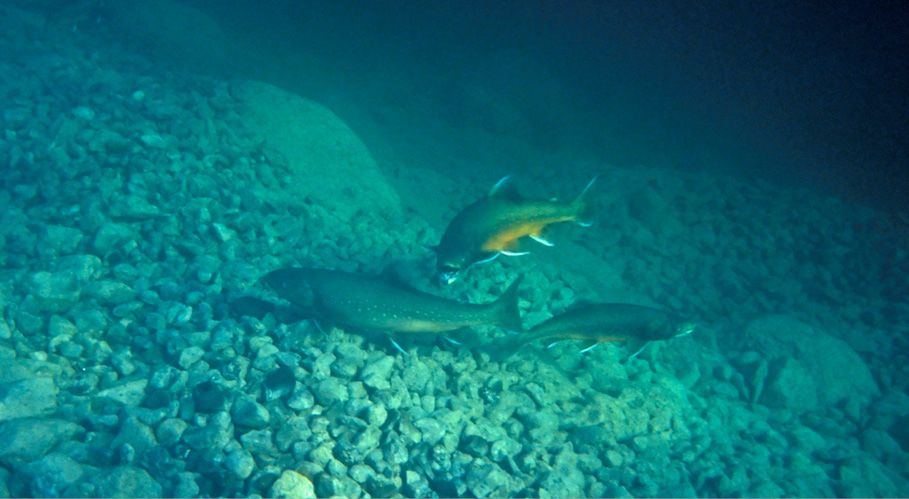Improving lake ecosystem
Additional Spawning grounds
Fish species interactions (Arctic char – whitefish – brown trout – pike – perch – grayling) are complex in these lakes and have major overall ecosystem effects. However, Arctic char has an important role as a predator on first zooplankton, then zoo-benthos and finally whitefish. Remediating measures to withhold and increase population densities of Arctic char will add balance to the total fish community and effect total ecosystem stability through top-down effects. This will in turn improve and withhold ecosystem resilience.
Therefore, Arctic char is a key species in these ecosystems, but currently under high pressure from eutrophication, siltation and climate warming and maybe unknown threats. Arctic char is a lake-spawning salmonid, preferring well-oxygenated gravel for deposition of eggs. At present decreasing population densities partly are due to low recruitment. Spawning takes place in October and eggs hatch in March-April. Siltation as a result of human activities in the catchment area has reduced gravel permeability and oxygenation of eggs at several of the existing spawning grounds.
Introduction of gravel at the right locations from a water recirculation perspective will enhance Arctic char recruitment. Sorted natural gravel in the proper size dimensions, 20 % of 16-32 mm, 40 % of 45-70 mm and 40 % of >70 mm has been used to establich new spawning grounds in Lake Näkten and Lake Lockne. We have also introduced fertilized fish roe at the sites.
From a climate change perspective this species is at the edge of its distribution range while inhabiting the project lakes. They are still there because of the deep and oligotrophic character of the lakes and their ecological importance should not be underestimated. However, warmer temperatures will further increase the threat to the existence of the Arctic char and the habitat it lives in.
Elimination of macrophytes
Macrophytes elimination has been performed at three sites, in the northern part and in the outlet of Lake Locknesjön as well as in Lake Bensjön (adjacent to Lake Revsundssjön). In these lakes, reed has been cut every year over a four year period. The reed has been removed from the lakes. Repeated cutting has prevented root access to oxygen, thus killing off the reed permanently.
Increased establishment and growth of reed is an important sign of eutrophication. The project lakes have normally hard bottom substrate, dominated by sand, gravel, stones or boulders. Reed is very sparsely spread in the lakes. However this plant has increased considerably over the last years in Lake Locknesjön and in Lake Bensjön. In areas with reed, water velocity is decreased and sediments are trapped creating unnaturally soft bottom areas. If not prevented, this problem will accelerate and particularly in a climate warming perspective, reed will continue to colonise shallow areas of the lakes, which in worst case scenario will alter lake status.






